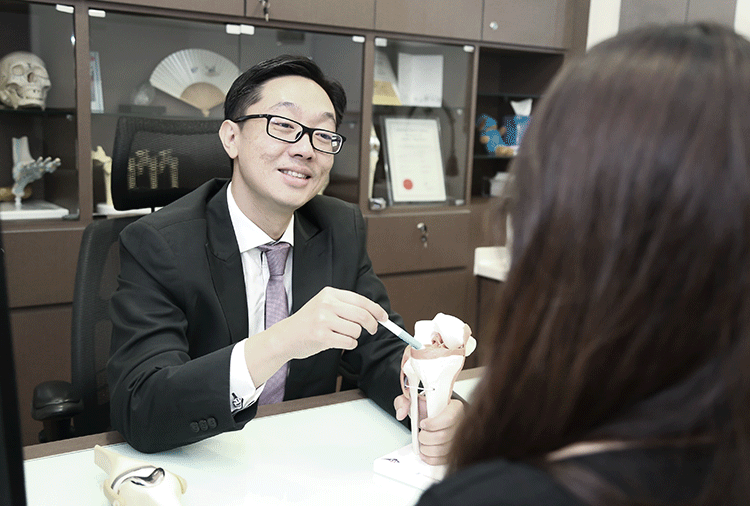What Is Tennis Elbow, And Why Is Treatment Important?
What Are The Causes And Risk Factors Of Tennis Elbow?
Several factors can contribute to the development of tennis elbow, including:
Repetitive Movements – Engaging in repetitive activities or motions that involve gripping, twisting, or lifting with the forearm muscles can strain the tendons and lead to inflammation and pain.
Sports Activities – Participation in racquet sports such as tennis, squash, or badminton, which involve repetitive arm movements and gripping, increases the risk of developing tennis elbow.
Manual Labor – Occupations or activities that require repetitive arm movements, gripping, or lifting heavy objects, such as carpentry, painting, or plumbing, can predispose individuals to tennis elbow.
Age and Gender – Tennis elbow is more common in individuals aged 30 to 50 years and is slightly more prevalent in men than women.
Poor Technique – Using improper equipment or technique during sports or activities, such as using a tennis racquet with a grip that is too small or hitting the ball with poor form, can increase the risk of developing tennis elbow.
Muscle Imbalances – Weakness or imbalance in the forearm muscles, particularly the extensor muscles that straighten the wrist and fingers, can increase the risk of tendon overuse and injury.
What Are The Common Symptoms Of Tennis Elbow?
The symptoms of tennis elbow may vary in severity but commonly include:
Pain – Pain and tenderness on the outside of the elbow, particularly around the bony bump (lateral epicondyle), which may radiate down the forearm.
Weakness – Weakness or difficulty gripping objects, especially with activities that involve wrist extension or lifting.
Stiffness – Stiffness or limited range of motion in the elbow joint, particularly when straightening the arm or lifting objects.
Pain with Movement – Pain or discomfort with certain movements or activities, such as gripping, lifting, or twisting the forearm.
Worsening Pain – Pain may worsen with repetitive arm movements, gripping activities, or lifting heavy objects, and may persist even at rest.
Swelling – Swelling or inflammation around the elbow joint, particularly on the outside of the elbow, may be present in some cases.
How Is Tennis Elbow Diagnosed?
Medical History – Your doctor will ask about your symptoms and medical history, including any activities or sports participation that may have contributed to your elbow pain. They may inquire about your occupation, hobbies, and any repetitive movements or tasks you perform regularly.
Physical Examination – During the physical examination, your doctor will:
- Palpate the lateral epicondyle (the bony prominence on the outer side of the elbow) to check for tenderness or swelling.
- Assess the range of motion of your elbow and wrist joints.
- Perform specific manoeuvres to reproduce symptoms, such as resisted wrist extension or gripping activities exacerbating pain.
- Evaluate muscle strength, sensation, and reflexes in the affected arm to rule out other conditions.
Diagnostic Tests – In most cases, tennis elbow can be diagnosed based on medical history and physical examination alone. However, in some cases, your doctor may order imaging tests such as: X-rays MRI (Magnetic Resonance Imaging)
What Are The Tennis Elbow Treatment Options?
Rest and Activity Modification
Ice Therapy
Bracing or Splinting
Physical Therapy
Medications
Nonsteroidal Anti-Inflammatory Drugs (NSAIDs): Over-the-counter or prescription NSAIDs such as ibuprofen or naproxen may help reduce pain and inflammation associated with tennis elbow.
Topical Analgesics: Creams, gels, or patches containing NSAIDs or capsaicin may be applied directly to the skin over the affected area to provide localized pain relief.
Corticosteroid Injections
Extracorporeal Shock Wave Therapy (ESWT)
Platelet-Rich Plasma (PRP) Therapy
Surgical Intervention
Surgical intervention may be considered in severe or persistent tennis elbow cases that do not respond to conservative treatments. Surgical options for tennis elbow may include:
- Tendon Debridement – Removal of damaged or degenerated tissue from the affected tendons.
- Tendon Release – Release of tension in the affected tendons to relieve pressure and reduce pain.
- Tendon Repair – Repair partially or completely torn tendons in cases of severe injury.
Recovery And Prevention Strategies For Tennis Elbow
Tennis elbow, also known as lateral epicondylitis, is a painful condition caused by overuse or repetitive strain of the muscles and tendons in the forearm. Recovery and prevention strategies for tennis elbow aim to reduce pain, inflammation, and strain on the affected tendons and prevent the condition’s recurrence. Here are some strategies:
For Recovery:
- Resting the affected arm and avoiding activities that exacerbate symptoms can help reduce inflammation and allow the injured tendons to heal. Limit or modify activities that involve repetitive gripping or wrist movements, such as tennis, gardening, or typing.
- Applying ice packs to the affected elbow can help reduce pain and inflammation. Use an ice pack or ice wrapped in a cloth and apply it to the elbow for 15-20 minutes several times daily, especially after activities or exercises that aggravate symptoms.
- A compression bandage or brace around the forearm can help reduce swelling and support the affected tendons. Be sure not to wrap the bandage too tightly, restricting blood flow.
- Elevating the affected arm above the heart level can help reduce swelling and promote drainage of excess fluid from the injured tissues. Prop up the arm with pillows when lying down or sitting.
- A physical therapist can design a customised rehabilitation program to strengthen the forearm muscles, improve flexibility, and restore normal function of the elbow joint. Treatment may include stretching exercises, manual therapy, and ultrasound or electrical stimulation modalities.
- A counterforce brace or forearm strap just below the elbow can help distribute pressure away from the injured tendons and reduce strain during activities. These braces can provide support and stability to the elbow joint.
- In severe or persistent pain cases, corticosteroid injections may be used to reduce inflammation and alleviate symptoms. However, these injections should be used judiciously and under the guidance of a healthcare professional, as they may have potential side effects and risks.
For Prevention:
- Use proper technique and form during activities and exercises to reduce strain on the forearm tendons. Avoid excessive gripping, twisting, or repetitive wrist movements, which can contribute to the development of tennis elbow.
- Ensure that sports equipment, tools, and devices are properly sized, fitted, and maintained to reduce the risk of injury and strain on the elbow joint.
- Use ergonomic tools with padded handles or grips to minimise stress on the forearm muscles and tendons.
- Gradually increase the intensity, duration, and frequency of activities and exercises to allow the muscles and tendons to adapt to increased demands safely. Avoid sudden changes in workload or training intensity that can lead to overuse injuries.
- Always thoroughly warm up before engaging in physical activity to prepare the muscles and tendons for movement. Likewise, cool down and stretch after exercise to prevent stiffness and reduce the risk of injury.
- Incorporate exercises to strengthen the muscles of the forearm, wrist, and hand and stretching exercises to improve flexibility and range of motion. Focus on exercises that target the extensor and flexor muscles of the forearm.
- Engage in various activities and exercises to reduce the risk of overuse injuries and promote balanced muscle development. Cross-training can help prevent repetitive strain on the same muscles and tendons.
- Pay attention to any signs of discomfort, pain, or fatigue in the forearm and elbow, and avoid pushing through pain during activities. If you experience persistent symptoms, modify your activities or seek medical evaluation and treatment.






